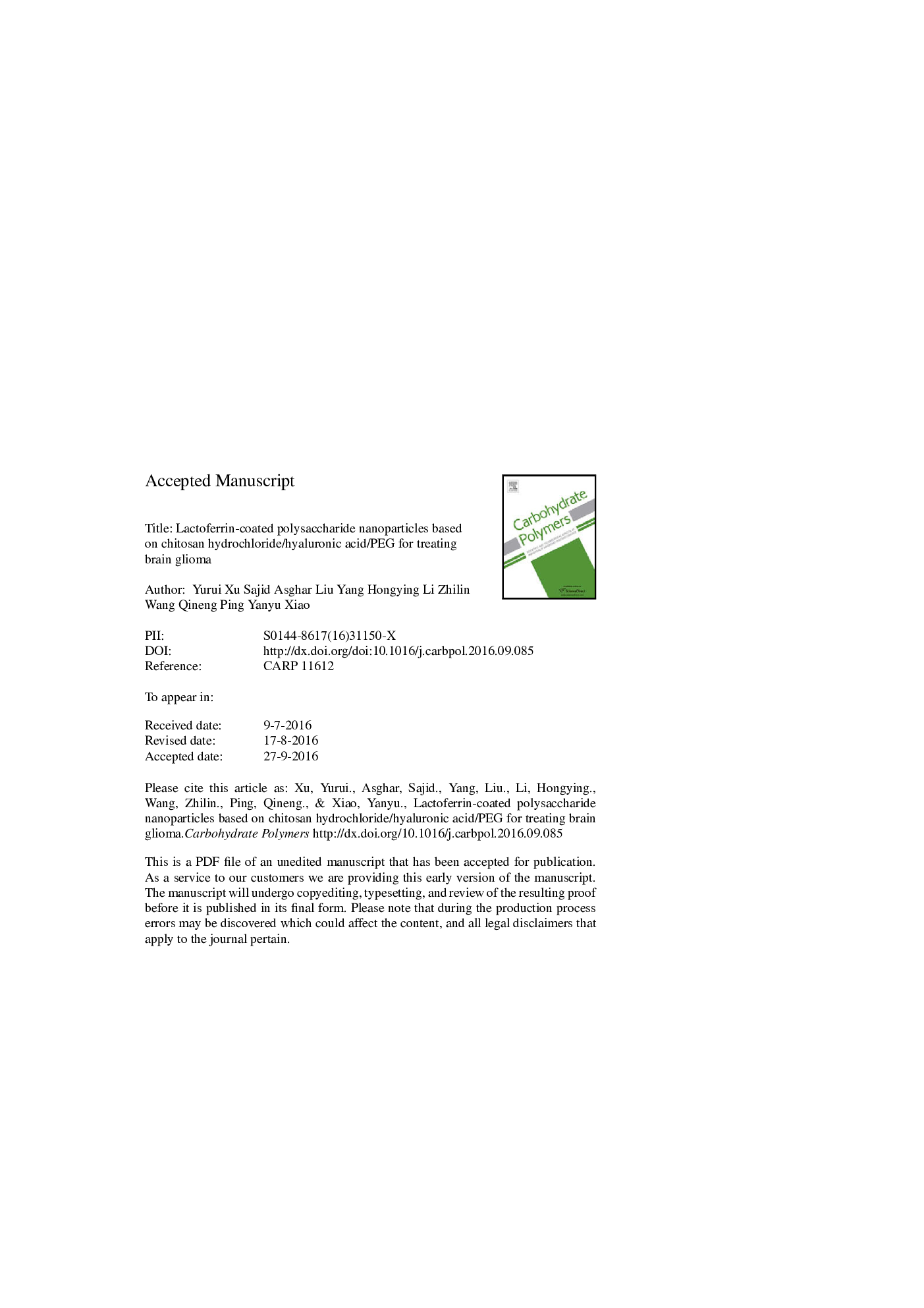| Article ID | Journal | Published Year | Pages | File Type |
|---|---|---|---|---|
| 5157838 | Carbohydrate Polymers | 2017 | 37 Pages |
Abstract
Curcuminoid (Cur) loaded polysaccharide nanoformulations with blood-brain barrier (BBB) penetration and brain targeting properties, based on hyaluronic acid (HA) and chitosan hydrochloride (CSH) (Lf-Cur-PSNPs) were developed as a novel delivery system for malignant glioma. Formulations were investigated for physicochemical characteristics, cytotoxicity, uptake, and BBB penetration. The results showed that LfM-Cur-PSNPs (concentration of Lf was 0.5Â mg/mL) were preferentially taken up by brain capillary endothelial cells than Cur-PSNPs at any time. After crossing the BBB, LfM-Cur-PSNPs remained largely intact and were more effective in targeting glioma cells (C6). In vivo imaging studies in mice exposed LfM-PSNPs could effectively permeate BBB and preferentially accumulate in the brain (2.39 times greater than PSNPs). Moreover, PSNPs were detected in brain up to 72Â h. This data indicates that Lf-Cur-PSNPs could effectively target and accumulate within the gliomas after enhanced permeation through BBB, thus should be further explored for their potential in CNS maliganancies.
Keywords
MWCO3,3′-dioctadecyloxacarbocyanine perchlorate3-(4,5-dimethylthiazol-2-yl)-2, 5-diphenyltetrazolium bromidePolysaccharide nanoparticlesLFRBCECsTEERDIOCSHBCALRPTransferrinFBSCURPBSPDI1,1′-dioctadecyl-3,3,3′,3′-tetramethylindocarbocyanine perchlorateDiIDIrDMEM/F12DMSOMTTHyaluronic acidFluorescence resonance energy transferFRETTemDrug loadingEncapsulation efficiencyCNSDimethylsulfoxideBBBfetal bovine serumbrain capillary endothelial cellcentral nervous systempolydispersity indexPhosphate buffered salineLactoferrinBlood-brain barriertransendothelial electrical resistanceTransmission electron microscopeChitosan hydrochlorideMolecular weightLow-density lipoprotein receptor-related proteinmolecular weight cut-offhigh performance liquid chromatographyHPLCCurcuminoidChitosan
Related Topics
Physical Sciences and Engineering
Chemistry
Organic Chemistry
Authors
Yurui Xu, Sajid Asghar, Liu Yang, Hongying Li, Zhilin Wang, Qineng Ping, Yanyu Xiao,
